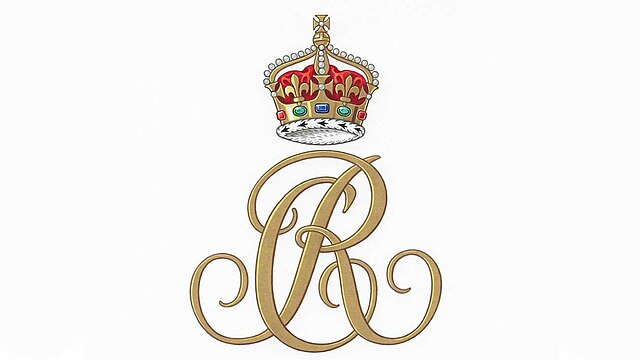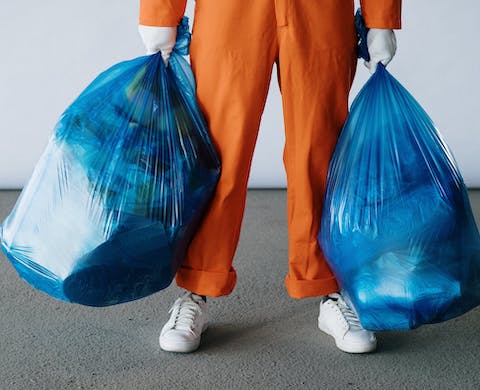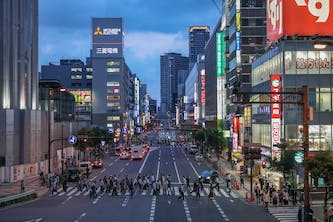The paper industry is facing scrutiny for its significant water usage. Despite being considered a more environmentally friendly option than plastic, the production of paper requires vast amounts of water. As the climate changes, there is growing concern about whether the industry is adopting new technologies quickly enough to reduce its water consumption.
Uruguay recently saw the opening of one of the world’s largest pulp mills, the UPM Paso de Los Toros facility. This occurred during the country’s worst-ever drought, sparking debates about the industry’s water usage. The mills turn wood into cellulose, which is then exported for paper production. The new facility is expected to double Uruguay’s total cellulose output, raising concerns about its impact on water resources.
UPM claims to be implementing water-saving technologies to reduce its water usage. For instance, the company recycles water multiple times before treating and discharging it back into the river. However, environmentalists are worried about potential water pollution from the treated waste water and its impact on the local ecosystem.
In addition to water usage, concerns have been raised about the impact of eucalyptus and pine tree plantations on water levels and biodiversity. While industry experts argue that there is no evidence of reduced water levels due to the plantations, environmental scientists warn about the potential irreversible changes in soil properties and reduced biodiversity caused by monoculture plantations.
Despite the industry’s efforts to reduce water usage and mitigate environmental impact, ongoing monitoring and scrutiny are necessary to ensure sustainable practices and minimize the industry’s ecological footprint.
Original news source: Does the paper industry need to cut its water usage? (BBC)
Listen
Slow
Normal
Fast
Group or Classroom Activities
Warm-up Activities:
– News Summary
Instructions: Students are divided into groups and each group is given a portion of the article to read. They must summarize the key points of their section to the rest of the class, highlighting the main issues and concerns regarding the paper industry’s water usage. This activity encourages students to focus on extracting the most important information and presenting it concisely.
– Opinion Poll
Instructions: Create a list of statements based on the article’s content, such as “The paper industry’s water consumption is justified by its environmental benefits compared to plastic.” Have students stand in a line according to their level of agreement or disagreement with each statement. Then, select individuals to explain their positions to foster a discussion on the various perspectives surrounding the paper industry’s environmental impact.
– Vocabulary Pictionary
Instructions: Write down key terms from the article (e.g., cellulose, biodiversity, monoculture, ecological footprint) on pieces of paper and place them in a hat. Students take turns drawing a term from the hat and drawing it on the board without writing any words or speaking. Their team must guess the vocabulary term within a given time frame. This helps reinforce new vocabulary in an interactive and memorable way.
– Synonym Challenge
Instructions: Prepare a list of words from the article, and challenge students to come up with synonyms for each word without repeating any previous suggestions. For example, for “scrutiny,” students might suggest “examination,” “analysis,” or “inspection.” This activity encourages students to expand their vocabulary and promotes quick thinking.
– Future Predictions
Instructions: After discussing the article, ask students to write down their predictions about the future of the paper industry. They should consider the environmental challenges and technological advancements mentioned in the article. Have students share their predictions in small groups, and then discuss as a class how these predictions could affect language use, such as the introduction of new industry-specific terminology, or the evolution of discourse around environmental issues.
Comprehension Questions:
1. What environmental concern is the paper industry facing due to its production processes?
2. How does the production of paper compare to plastic in terms of environmental friendliness?
3. Where is the UPM Paso de Los Toros facility located and what significance does its opening have?
4. How will the UPM Paso de Los Toros facility affect Uruguay’s cellulose output?
5. What measures is UPM claiming to implement to address its water consumption issue?
6. What are environmentalists concerned about regarding the treated wastewater from the pulp mills?
7. What are the two types of tree plantations mentioned, and what concerns do they raise related to water levels and biodiversity?
8. What is considered necessary to ensure that the paper industry maintains sustainable practices and minimizes its ecological footprint?
Go to answers ⇩
Listen and Fill in the Gaps:
The (1)______ industry is facing scrutiny for its (2)______ water usage. Despite being considered a more environmentally (3)______ option than plastic, the production of paper requires vast amounts of water. As the climate changes, there is (4)______ concern about whether the industry is adopting new technologies quickly enough to reduce its water consumption.
Uruguay recently saw the opening of one of the world’s largest pulp mills, the UPM Paso de Los (5)______ facility. This (6)______ during the country’s worst-ever drought, sparking debates about the industry’s water usage. The mills turn wood into cellulose, which is then exported for paper production. The new facility is expected to (7)______ Uruguay’s total cellulose output, raising concerns about its impact on water (8)______.
UPM claims to be implementing water-saving technologies to reduce its water usage. For instance, the company recycles water multiple times before treating and discharging it back into the (9)______. However, environmentalists are worried about potential water pollution from the treated waste water and its (10)______ on the local ecosystem.
In addition to water usage, concerns have been raised about the impact of eucalyptus and pine tree plantations on water levels and (11)______. While industry (12)______ argue that there is no evidence of reduced water levels due to the (13)______, environmental scientists warn about the (14)______ irreversible changes in soil properties and reduced biodiversity caused by monoculture plantations.
Despite the industry’s efforts to reduce water usage and mitigate environmental impact, ongoing monitoring and (15)______ are (16)______ to ensure sustainable practices and minimize the industry’s ecological footprint.
Go to answers ⇩
Discussion Questions:
Students can ask a partner these questions, or discuss them as a group.
1. What are some industries you know of that require significant water usage, and how do you think they compare to the paper industry?
2. How would you feel if a large industrial facility, like a pulp mill, opened near your community during a drought?
3. Do you think it’s important for industries to adopt new technologies to reduce their environmental impact? Why or why not?
4. What is your opinion on the trade-off between economic development and environmental conservation?
5. How do you perceive the role of environmentalists in influencing industrial practices?
6. Do you think companies often exaggerate their environmental efforts for public approval? Can you give an example?
7. What is your stance on the use of monoculture plantations, and do you think they are sustainable in the long term?
8. Have you ever participated in or supported any environmental advocacy regarding industrial water usage? If so, what was your experience?
9. Do you believe that paper is a more environmentally friendly option than plastic, considering the water usage in its production?
10. How would you propose industries like paper production balance their water consumption with the need to protect water resources?
11. Do you think governments should impose stricter regulations on industries regarding water usage? Why or why not?
12. Can you think of any alternative materials that could replace paper and reduce environmental impact?
13. How do you think climate change will affect industries that are heavily reliant on water?
14. Do you like the idea of using recycled water in industrial processes, and do you think it’s an effective way to conserve water?
15. Do you think ongoing monitoring and scrutiny of industries are effective in ensuring sustainable practices, or are there better ways to enforce environmental responsibility?
Individual Activities
Vocabulary Meanings:
Match each word to its meaning.
Words:
1. paper
2. industry
3. water
4. Uruguay
5. pulp
6. cellulose
7. eucalyptus
8. biodiversity
Meanings:
(a) Economic activity concerned with the processing of raw materials
(b) Fibrous material used for making paper
(c) Chemical compound found in plant cell walls
(d) Material used for writing or printing
(e) Type of tree commonly used in paper production
(f) Essential for all forms of life
(g) Variety of plant and animal life in an ecosystem
(h) South American country
Go to answers ⇩
Multiple Choice Questions:
1. What is one of the main concerns regarding the paper industry?
(a) Its high energy consumption
(b) Its lack of recyclability
(c) Its significant water usage
(d) Its impact on air quality
2. What is the UPM Paso de Los Toros facility expected to do?
(a) Reduce water pollution
(b) Close due to environmental concerns
(c) Increase paper prices
(d) Double Uruguay’s total cellulose output
3. What does UPM claim to be implementing to reduce its water usage?
(a) Water-saving technologies
(b) Increased water usage
(c) Water pollution
(d) Deforestation
4. What are environmentalists worried about regarding the treated waste water from the UPM facility?
(a) Its impact on paper production
(b) Its impact on air quality
(c) Its impact on soil properties
(d) Potential water pollution
5. What have concerns been raised about regarding eucalyptus and pine tree plantations?
(a) Their positive impact on the environment
(b) Their impact on water levels and biodiversity
(c) Their low water usage
(d) Their ability to increase biodiversity
6. What do industry experts argue regarding the impact of eucalyptus and pine tree plantations on water levels?
(a) They have significantly reduced water levels
(b) There is no evidence of reduced water levels
(c) They have improved water levels
(d) They have caused water shortages
7. What do environmental scientists warn about regarding monoculture plantations?
(a) Potential irreversible changes in soil properties and reduced biodiversity
(b) Increased water levels
(c) Improved soil properties
(d) Enhanced biodiversity
8. What is necessary to ensure sustainable practices and minimize the industry’s ecological footprint?
(a) Increased water usage
(b) Less regulation
(c) Ongoing monitoring and scrutiny
(d) More monoculture plantations
Go to answers ⇩
True or False Questions:
1. The paper industry is praised for its significant water usage, despite being considered more environmentally friendly than plastic.
2. The opening of one of the world’s largest pulp mills, the UPM Paso de Los Toros facility, in Uruguay sparked debates about the industry’s water usage during the country’s worst-ever drought.
3. Industry experts argue that there is evidence of reduced water levels due to the plantations, while environmental scientists dismiss potential irreversible changes in soil properties and reduced biodiversity.
4. The production of paper requires minimal amounts of water, eliminating concerns about the industry’s impact on water resources.
5. UPM claims to be implementing water-saving technologies to reduce its water usage, including recycling water multiple times before treating and discharging it back into the river.
6. Environmentalists are worried about the impact of eucalyptus and pine tree plantations on water levels and biodiversity.
7. Ongoing monitoring and scrutiny are unnecessary because sustainable practices and minimizing the industry’s ecological footprint have already been achieved.
8. Concerns have been raised about potential water pollution from the treated waste water and its impact on the local ecosystem.
Go to answers ⇩
Write a Summary:
Write a summary of this news article in two sentences.
Check your writing now with the best free AI for English writing!
Writing Questions:
Answer the following questions. Write as much as you can for each answer.
Check your answers with our free English writing assistant!
1. What environmental concerns are associated with the paper industry, particularly in the context of climate change?
2. How is Uruguay’s new UPM Paso de Los Toros facility contributing to the debate on the paper industry’s water usage?
3. What measures is UPM claiming to implement at their new pulp mill to address water consumption concerns?
4. Why are environmentalists concerned about the potential impact of treated wastewater from the pulp mills?
5. What are the arguments presented by industry experts and environmental scientists regarding the impact of eucalyptus and pine tree plantations on water levels and biodiversity?
Answers
Comprehension Question Answers:
1. What environmental concern is the paper industry facing due to its production processes?
The paper industry is facing scrutiny for its significant water usage, which is a concern especially in the context of climate change and water scarcity.
2. How does the production of paper compare to plastic in terms of environmental friendliness?
Paper is generally considered to be more environmentally friendly than plastic, but the production of paper still requires vast amounts of water, which is a growing concern.
3. Where is the UPM Paso de Los Toros facility located and what significance does its opening have?
The UPM Paso de Los Toros facility is located in Uruguay, and its opening is significant because it occurred during the country’s worst-ever drought, sparking debates about the paper industry’s water usage.
4. How will the UPM Paso de Los Toros facility affect Uruguay’s cellulose output?
The UPM Paso de Los Toros facility is expected to double Uruguay’s total cellulose output.
5. What measures is UPM claiming to implement to address its water consumption issue?
UPM claims to be implementing water-saving technologies, such as recycling water multiple times before treating and discharging it back into the river.
6. What are environmentalists concerned about regarding the treated wastewater from the pulp mills?
Environmentalists are worried about potential water pollution from the treated wastewater and its impact on the local ecosystem.
7. What are the two types of tree plantations mentioned, and what concerns do they raise related to water levels and biodiversity?
The two types of tree plantations mentioned are eucalyptus and pine. Concerns have been raised about their impact on water levels and biodiversity, with environmental scientists warning about potential irreversible changes in soil properties and reduced biodiversity due to monoculture plantations.
8. What is considered necessary to ensure that the paper industry maintains sustainable practices and minimizes its ecological footprint?
Ongoing monitoring and scrutiny are necessary to ensure sustainable practices and to minimize the industry’s ecological footprint.
Go back to questions ⇧
Listen and Fill in the Gaps Answers:
(1) paper
(2) significant
(3) friendly
(4) growing
(5) Toros
(6) occurred
(7) double
(8) resources
(9) river
(10) impact
(11) biodiversity
(12) experts
(13) plantations
(14) potential
(15) scrutiny
(16) necessary
Go back to questions ⇧
Vocabulary Meanings Answers:
1. paper
Answer: (d) Material used for writing or printing
2. industry
Answer: (a) Economic activity concerned with the processing of raw materials
3. water
Answer: (f) Essential for all forms of life
4. Uruguay
Answer: (h) South American country
5. pulp
Answer: (b) Fibrous material used for making paper
6. cellulose
Answer: (c) Chemical compound found in plant cell walls
7. eucalyptus
Answer: (e) Type of tree commonly used in paper production
8. biodiversity
Answer: (g) Variety of plant and animal life in an ecosystem
Go back to questions ⇧
Multiple Choice Answers:
1. What is one of the main concerns regarding the paper industry?
Answer: (c) Its significant water usage
2. What is the UPM Paso de Los Toros facility expected to do?
Answer: (d) Double Uruguay’s total cellulose output
3. What does UPM claim to be implementing to reduce its water usage?
Answer: (a) Water-saving technologies
4. What are environmentalists worried about regarding the treated waste water from the UPM facility?
Answer: (d) Potential water pollution
5. What have concerns been raised about regarding eucalyptus and pine tree plantations?
Answer: (b) Their impact on water levels and biodiversity
6. What do industry experts argue regarding the impact of eucalyptus and pine tree plantations on water levels?
Answer: (b) There is no evidence of reduced water levels
7. What do environmental scientists warn about regarding monoculture plantations?
Answer: (a) Potential irreversible changes in soil properties and reduced biodiversity
8. What is necessary to ensure sustainable practices and minimize the industry’s ecological footprint?
Answer: (c) Ongoing monitoring and scrutiny
Go back to questions ⇧
True or False Answers:
1. The paper industry is praised for its significant water usage, despite being considered more environmentally friendly than plastic. (Answer: False)
2. The opening of one of the world’s largest pulp mills, the UPM Paso de Los Toros facility, in Uruguay sparked debates about the industry’s water usage during the country’s worst-ever drought. (Answer: True)
3. Industry experts argue that there is evidence of reduced water levels due to the plantations, while environmental scientists dismiss potential irreversible changes in soil properties and reduced biodiversity. (Answer: False)
4. The production of paper requires minimal amounts of water, eliminating concerns about the industry’s impact on water resources. (Answer: False)
5. UPM claims to be implementing water-saving technologies to reduce its water usage, including recycling water multiple times before treating and discharging it back into the river. (Answer: True)
6. Environmentalists are worried about the impact of eucalyptus and pine tree plantations on water levels and biodiversity. (Answer: True)
7. Ongoing monitoring and scrutiny are unnecessary because sustainable practices and minimizing the industry’s ecological footprint have already been achieved. (Answer: False)
8. Concerns have been raised about potential water pollution from the treated waste water and its impact on the local ecosystem. (Answer: True)
Go back to questions ⇧













